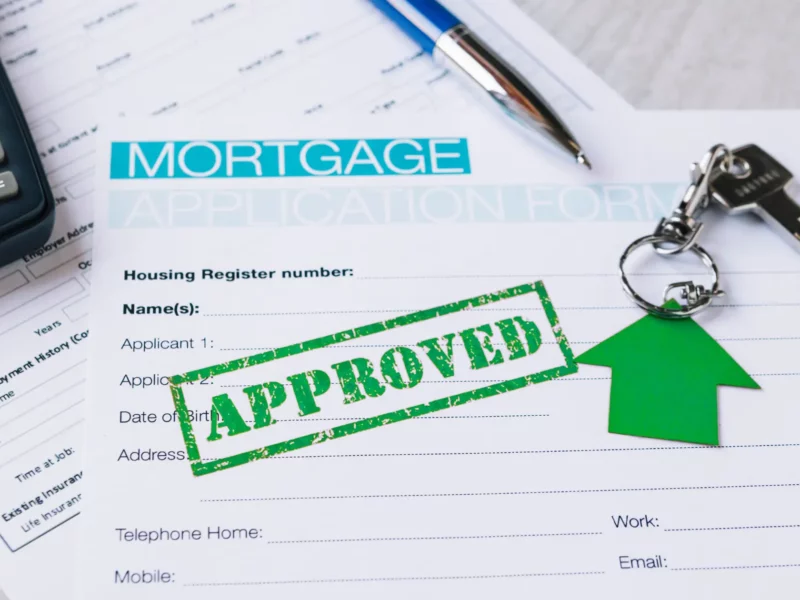Securing pre-approval for a home loan is a vital step in the process of purchasing a house. It signifies that a lender has assessed you as a suitable candidate for a loan and is willing to lend you the necessary funds to buy a home. Before you embark on your house-hunting journey, it’s crucial to obtain pre-approval as it provides valuable insights into your affordability and projected monthly payments.
This blog post aims to guide you on obtaining pre-approval for a home loan and shed light on its significance in your home-buying journey.
Documents Required for Home Loan Pre-Approval
When you go through the pre-approval process, you’ll be asked to submit various documents that assist the lender in evaluating your eligibility for a home loan. Here are some of the documents they may require:
- Proof of income and employment, such as tax returns, W-2s, and 1099s.
- Statements detailing your assets, including bank accounts, retirement savings, and brokerage accounts.
- Information about your monthly debt payments and any outstanding real estate debts.
- Documentation related to rent payments, divorce proceedings, bankruptcy filings, or foreclosure history.
These documents will be needed again when you formally apply for the loan. By providing them upfront, you can help streamline the pre-approval process and gain a clearer understanding of your affordability.
Importance of Comparing Rates and Fees from Multiple Lenders.
It’s crucial to compare rates and fees from different lenders to make sure you can maximize your savings throughout the loan’s duration. Here are a few reasons why this comparison is important:
- Lenders offer varying interest rates. Even a slight difference in interest rates can result in substantial savings over the entire loan term.
- Fees can differ significantly among lenders. Some may impose higher fees, ultimately increasing the overall expense of your loan.
- By comparing rates and fees from multiple lenders, you can identify the best deal that aligns with your specific needs and financial situation.
- Conducting thorough research allows you to steer clear of scams and predatory lending practices.
When comparing rates and fees, it’s vital to consider the annual percentage rate (APR) rather than solely focusing on the interest rate. The APR encompasses both the interest rate and associated fees, providing a more accurate estimation of the total borrowing cost.
A Typical Application of a Pre-Approved Loan
The process of applying for a home loan can differ based on the lender and the type of loan you’re seeking. Nevertheless, here are some general steps you can anticipate:
Pre-approval:
Before you begin your home search, it’s wise to obtain pre-approval for a loan. This step allows you to gauge your affordability and narrow down your options.
Application:
Once you’ve identified a desired property, you’ll need to complete a loan application. This involves sharing details about your income, employment history, assets, and debts.
Documentation:
Supporting documentation must be provided alongside your application, such as tax returns, bank statements, and pay stubs.
Appraisal:
The lender will arrange for a property appraisal to determine its value.
Underwriting:
Your application and documentation will undergo review by the lender to assess if you meet their lending criteria.
Closing:
If your application is approved, you’ll be required to sign various documents during the closing process. These may include the loan agreement, mortgage note, and other pertinent forms. The entire process can span several weeks or even months, depending on the lender and the complexity of your application. However, collaborating with an experienced lender can help streamline the process and alleviate stress.
What Next After Pre-Approved Loan is Approved?
After your home loan gets approved, there are some important steps remaining before you can officially close the deal on your new home. Here’s a breakdown of what lies ahead:
Final underwriting:
The lender will carefully scrutinize your application and supporting documents to ensure everything is in proper order.
Home inspection:
To identify any substantial issues that could affect the property’s value, it’s essential to have a professional home inspection conducted.
Title search:
The lender will undertake a thorough title search to verify that there are no legal claims or complications tied to the property.
Homeowner’s insurance:
Acquiring homeowner’s insurance is a critical step in protecting your valuable investment.
By completing these steps, you’ll be one step closer to finalizing your home purchase. If you have any further questions or require assistance, feel free to reach out.
Closing:
Once all requirements are met, you’ll need to sign the final paperwork and settle any closing costs. After the closing, you become the proud owner of a new home! However, there are a few additional tasks to address:
Move in:
The next step involves moving all your belongings into your new home.
Set up utilities:
It’s essential to arrange for utilities such as electricity, gas, and water to be connected and functional.
Register for homestead exemption:
If you intend to make the home your primary residence, you may qualify for a homestead exemption on your property taxes.
Make Mortgage Payments:
Timely payment of your monthly mortgage installments is vital to avoid defaulting on the loan.
Once again, congratulations on your new home! If you have any further questions or need assistance, please don’t hesitate to reach out.
Conclusion
In summary, obtaining pre-approval for a home loan marks a crucial initial step in the home buying journey. It empowers you to determine your affordability and gain a competitive advantage in a bustling real estate market. To secure pre-approval, factors such as a favorable credit score, consistent income, and a stable employment history play a significant role. Supporting documentation must also be provided to substantiate your application.
When seeking a home loan, it’s essential to diligently compare rates and fees from various lenders to identify the most suitable option for your unique needs and financial capacity. Following loan approval, a series of additional steps need to be completed before the closing on your new home. These encompass a final underwriting review, a comprehensive home inspection, a thorough title search, and the acquisition of homeowner’s insurance.
After the closing, you’ll embark on the exciting phase of moving into your new home, arranging utilities, and ensuring timely mortgage payments. By adhering to these steps and collaborating with an informed lender, you can navigate the home buying process with reduced stress and enjoy a more fulfilling experience.
I trust this blog post has provided valuable insights! If you’re ready to pursue pre-approval for a home loan, begin by assessing your credit score and assembling the necessary documentation. Best of luck!
Frequently Asked Questions
Question: What is the difference between pre-approval and pre-qualification?
Answer: Pre-qualification is an initial step in the home-buying process that involves providing basic information about your income, debts and assets. Based on this information, the lender will give you an estimate of how much you may be able to borrow. Pre-qualification is not a guarantee that you’ll be approved for a loan. Pre-approval, on the other hand, is a more formal process that involves submitting a complete loan application and supporting documentation. The lender will review your application and documentation to determine whether you meet their lending criteria. If you’re approved, you’ll receive a pre-approval letter that outlines how much you can borrow and under what terms.
Question: What sets pre-approval apart from pre-qualification?
Answer: Pre-qualification serves as an initial step in the home-buying process. It entails providing basic details about your income, debts, and assets. Based on this information, the lender offers an estimated borrowing amount. However, it’s important to note that pre-qualification does not guarantee loan approval.
In contrast, pre-approval is a more formal procedure involving the submission of a comprehensive loan application along with supporting documentation. The lender thoroughly reviews your application and accompanying paperwork to assess your eligibility based on their specific lending criteria. Upon approval, you’ll receive a pre-approval letter outlining the approved loan amount and the associated terms.
I hope this clarifies the distinction between pre-qualification and pre-approval! If you have any further inquiries, please feel free to let me know.






